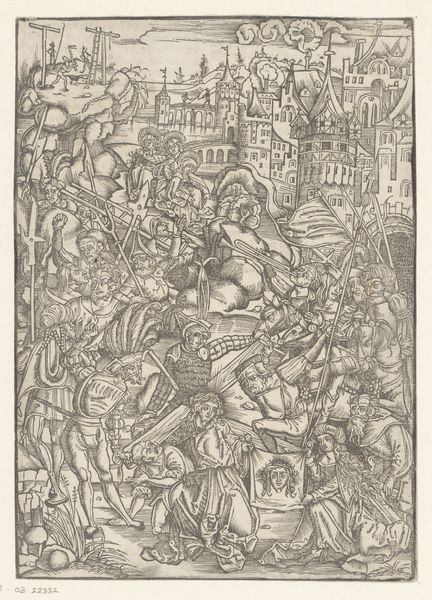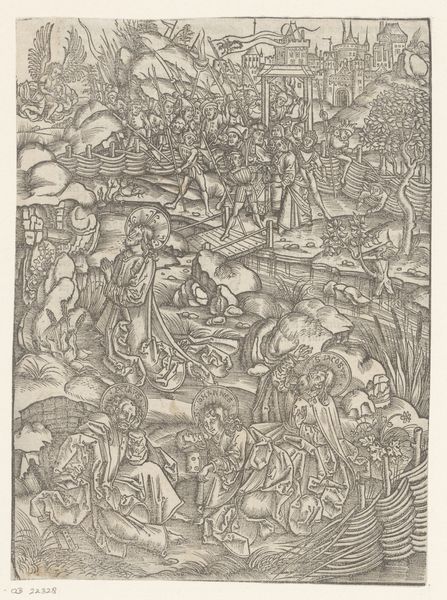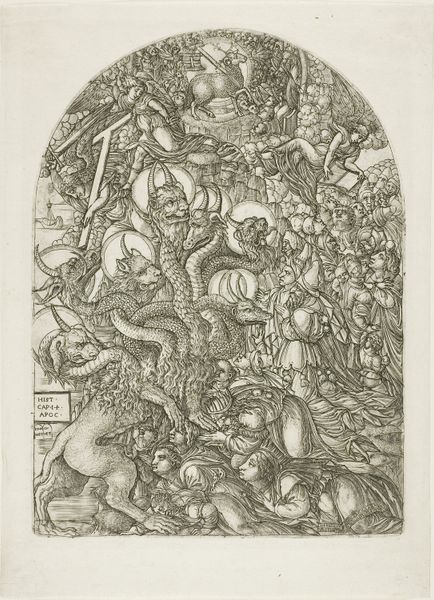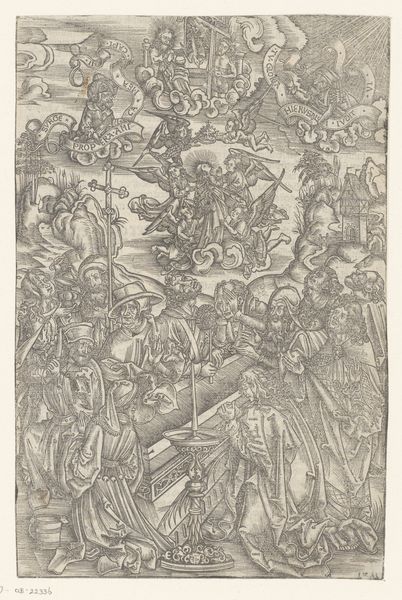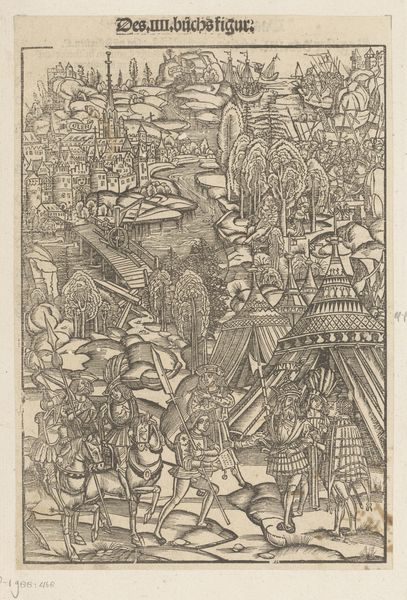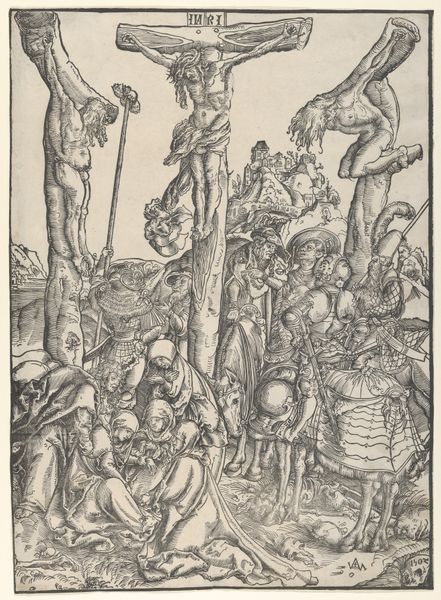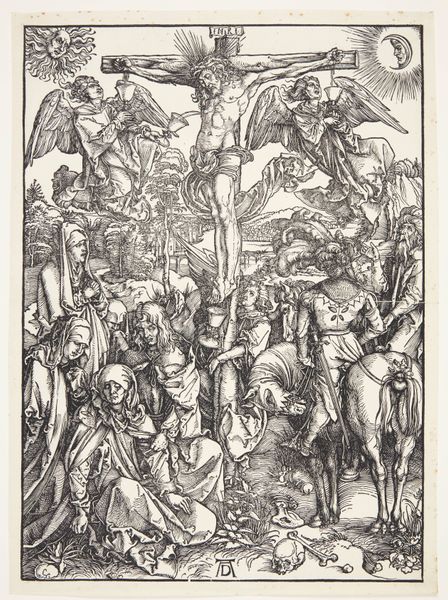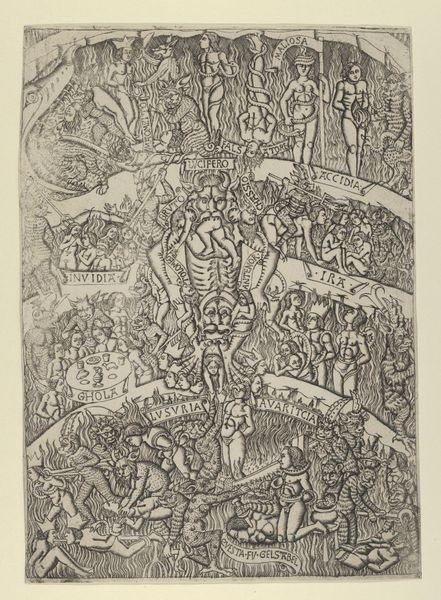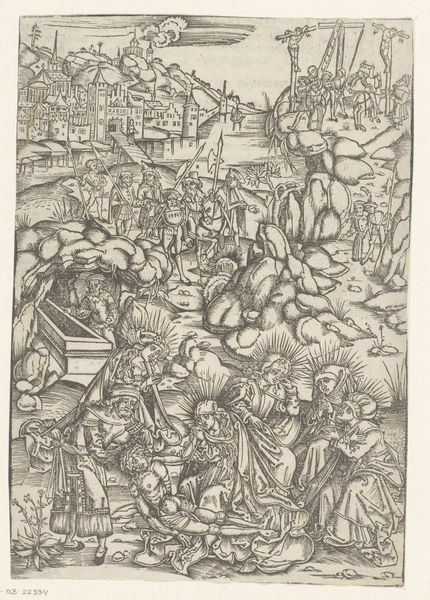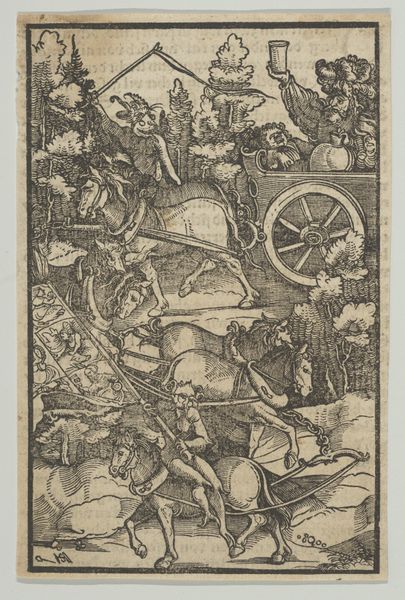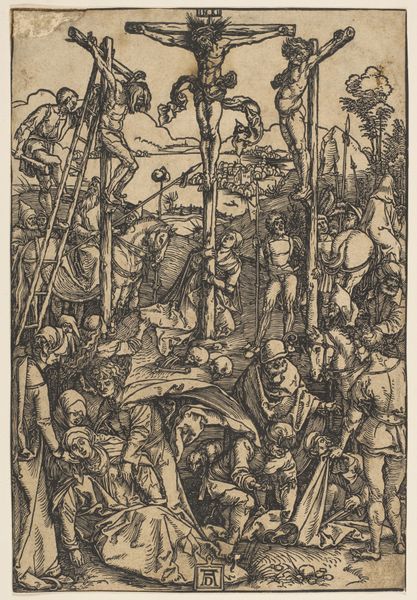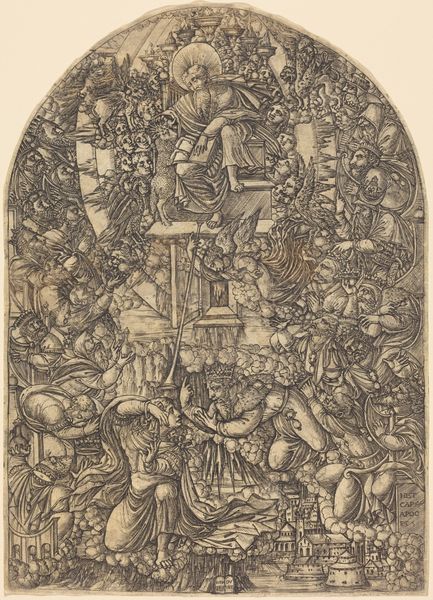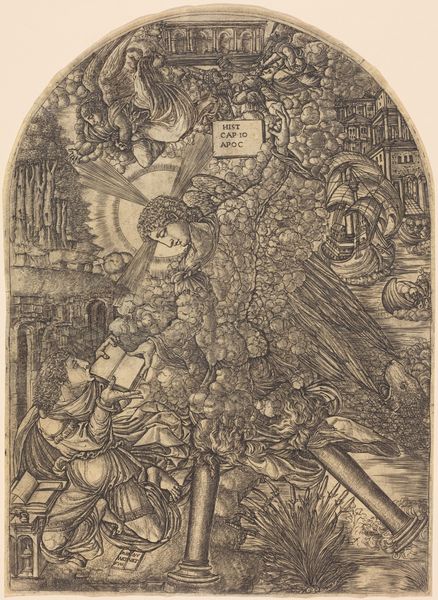
print, woodcut, engraving
#
portrait
#
medieval
#
pen drawing
# print
#
pen illustration
#
pen sketch
#
figuration
#
form
#
woodcut
#
line
#
history-painting
#
northern-renaissance
#
engraving
Dimensions: height 225 mm, width 156 mm
Copyright: Rijks Museum: Open Domain
Editor: This woodcut, "Kruisiging," or Crucifixion, by Hans Lützelburger, made sometime between 1502 and 1510, is incredibly detailed! The sheer number of figures is overwhelming, and the linear quality gives it an intense energy. How do you interpret the power dynamics present in this piece, particularly considering its historical context? Curator: The power dynamics here are incredibly fraught and complex. Consider the historical moment: the early 16th century, a time of immense social upheaval and religious reform. The crucifixion scene itself, visually centered, obviously depicts the ultimate subjugation, Christ's execution as a political act. Editor: I hadn't considered the direct correlation between the religious event and political message. Curator: Exactly! The Roman soldiers and the wealthy onlookers—look closely at their attire—represent the established order, complicit in this act of violence. And juxtapose them to the grieving figures surrounding Mary – observe how they highlight the vulnerability and powerlessness experienced by the oppressed at the hands of an authoritarian patriarchy. Editor: It's like Lützelburger is pointing to a broader narrative of oppression. What role do you think his medium, the woodcut, plays in conveying this message? Curator: The woodcut, as a printmaking technique, inherently lends itself to the dissemination of ideas. This image wasn't meant for a wealthy patron's private collection; it was meant to be reproduced and circulated, spreading a particular message, potentially subverting the dominant ideology. How might audiences at the time, in a society very different than our own, understood and interpret such symbolism? Editor: That’s such a powerful idea – that this artwork was meant to spark dialogue. I'll definitely think differently about art's role in challenging societal norms going forward. Curator: Indeed! Remember to question established interpretations and look for voices silenced or marginalized. Art becomes infinitely more relevant when connected to the ongoing struggles for justice.
Comments
No comments
Be the first to comment and join the conversation on the ultimate creative platform.
